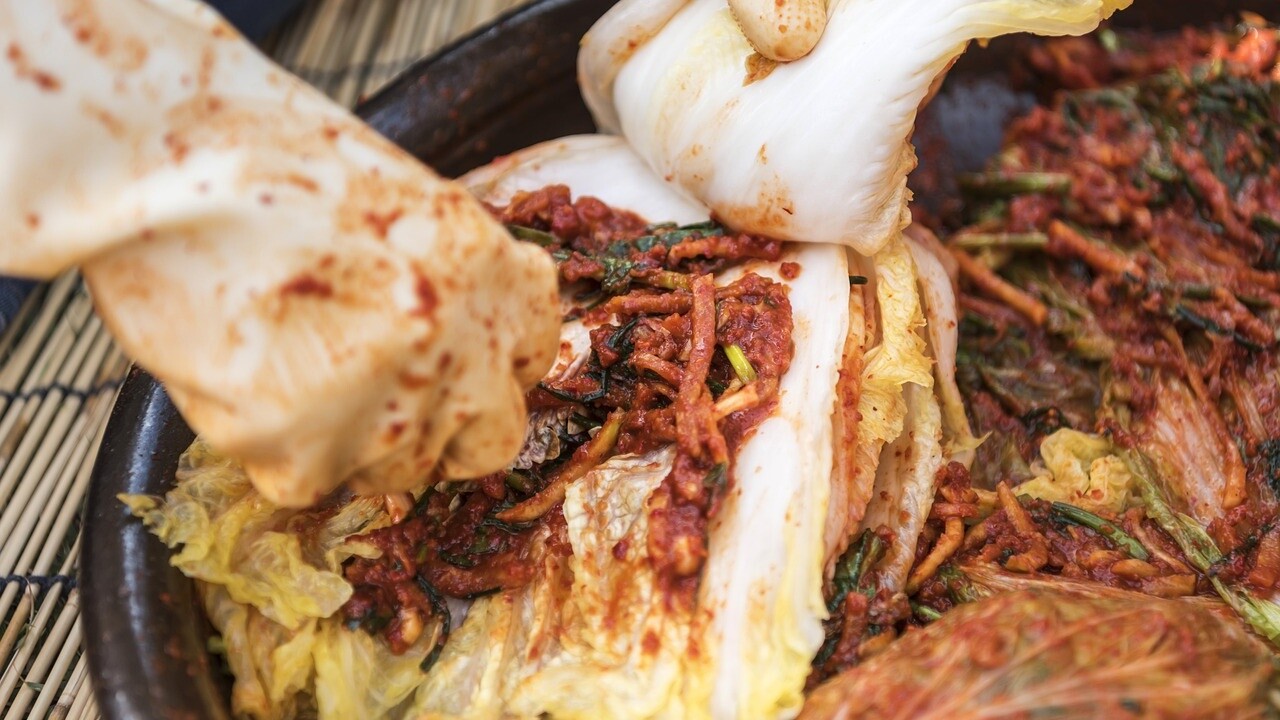
There are many ways to assess the cost of living. In Korea, the price of food staples like ramen or jjajangmyeon are often used for this purpose. When the cold winds blow in, however, the price of a certain vegetable takes the spotlight: napa cabbage.
November is the month when gimjang, or kimchi-making before winter, is in full swing in many Korean households. Making a year’s worth of kimchi requires large purchases of napa cabbage, radish, scallions, red pepper flakes and salted shrimp. Kimchi varieties number in the hundreds, and the mother of them all is napa cabbage kimchi, followed by radish kimchi. Napa cabbage kimchi is made first before moving onto the other types, so the price of napa cabbage can make or break a household budget. Ten or so heads are needed for kimchi-making on a small scale, but that number jumps to hundreds for large-scale operations.
In this day and age where we have fresh vegetables all year round and the means to preserve them, why do we still make a year’s worth of kimchi? For one thing, cabbage and radish are the cheapest and tastiest in fall. For another, sour kimchi that has been fermenting for over six months lends a pungent flavor to jjigae and stir fries. Although vinegar can be used in these foods for tartness, nothing beats aged kimchi that’s been naturally fermented.
Traditionally, gimjang was a communal activity that brought together families, relatives and neighbors. After making kimchi, everyone celebrated by eating boiled pork with unfermented kimchi and its fillings, all washed down with makgeolli. Depending on the region, kimchi can be made with raw oysters or small raw fish like cutlassfish or coraker. You can eat leftover raw oysters with the pork but must wait several months for the fish in kimchi. As the bones break down and infuse flavor, the fish becomes like jeotgal (salted seafood), a savory treat you just can’t stop eating with bowl after bowl of rice.
All this sounds festive, but there’s a group of people for whom November strikes a fear into their hearts: daughters-in-law. The spirit of gimjang can be lost on them with all the work given to them by their mothers-in-law. There’s intense labor involved: splitting the napa cabbage into quarters and salting each of the layers; while that sits, prepping the ingredients to make the filling; and once the cabbage is soft and supple, the filling is stuffed layer by layer to spread red paste into every nook and cranny before tightly wrapping the whole thing into a tight packet. It doesn’t matter if the daughter-in-law asserts that she’ll be buying pre-made kimchi. The mother-in-law has burned into her brain the following role assignments: the daughter-in-law makes the kimchi and the son eats it with boiled pork slices (as for the daughter, she’s also an eater, not a maker). The only way out for daughters-in-law may be to feign injury with an arm slung in a fake cast. But what about the major holidays beyond November? That’s a whole other conversation that I’ll save for another day.
Translator: Culture Flipper English Team
Original Content in Korean: cultureflipper.com/blog/november-the-month-to-buy-napa-cabbage-ko
Japanese Translation: cultureflipper.com/blog/november-the-month-to-buy-napa-cabbage-ja
